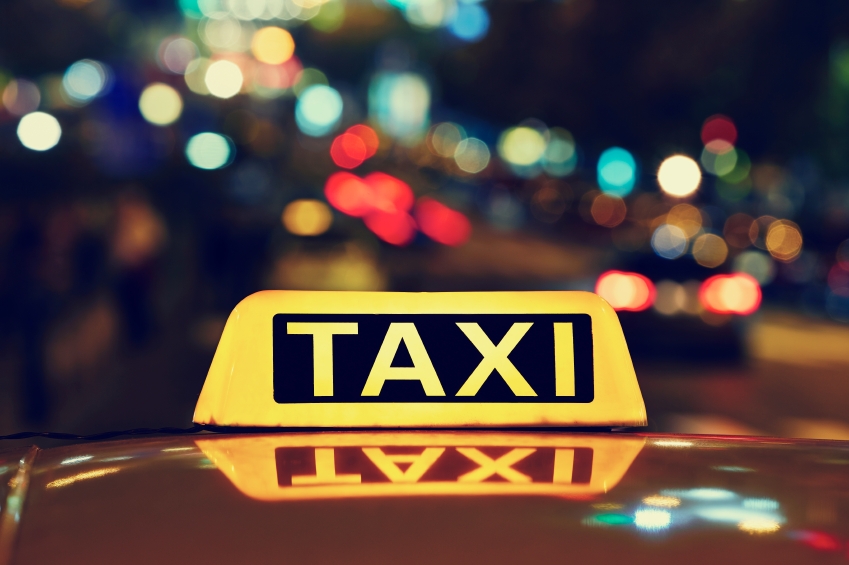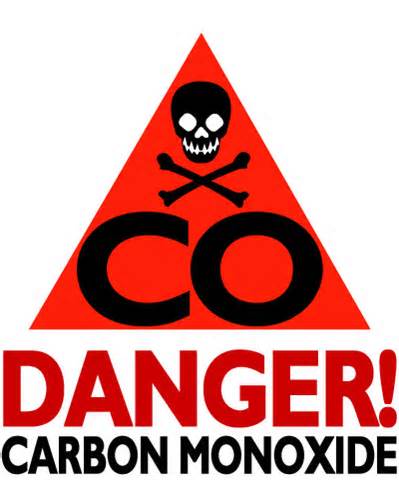FAQs

There are time-sensitive deadlines, called statutes of limitations, which restrict the amount of time you have to file a lawsuit. In NY, the deadline is 2 years from when the person passed away. You will lose your eligibility to receive compensation if you do not file by the deadline.
There are certain exceptions to this rule. For example, if the only person entitled to file a wrongful death claim is a minor child, the statute of limitations may be extended until the child is 18 years old.
No amount of money will bring back your loved one, but sometimes it helps pay bills and ensures your family can carry on without the financial support of the person who died. Please contact the Law Offices of Goldstein and Bashner today to schedule your free wrongful death consultation. Our compassionate lawyers will answer any questions you may have.
Construction workers and others who spend time in and around construction sites are often at risk of serious injury, especially from dangerous construction equipment accidents. Liability for a dangerous construction machinery accident depends on the cause of the accident, who owns the machine, and your relationship to the owner. In some cases, the liable party may be your employer, a subcontractor, or even the machine manufacturer.
Your Employer Causes the Injuries
When your injuries occur due to your employer’s negligence, you will likely only be able to recover workers’ compensation. This makes it difficult to get all of the money you need to cover your injuries, if they are severe.
However, under New York State Labor Law § 241, if your employer violated certain safety codes, you might be able to hold him or her liable. We can determine whether your case meets the specifications.
A Third Party Causes the Accident
Often, there is more than one employer working on a construction site at the same time. If one of these parties is liable for your injuries, you can file a claim for compensation.
This might be the case if a negligent contractor from another firm hits you with a crane arm or crushes you or a loved one with a wheel loader.
You might also be able to hold a third party liable under Labor Law § 241.
A Defective Machine Causes Your Injuries
In some cases, the machine itself has a defect or problem that causes an accident. Defects in construction machinery can occur in many ways, including:
- Poor materials
- Problems in the manufacturing process
- Missing labels or warnings
- Insufficient directions for use
- Lack of maintenance
When a defect in the machinery causes an accident and your injuries, you can file a third-party claim against the designer, manufacturer, or distributor responsible for the defects.
Identifying the liable party in a defective machine case requires identifying how the defect occurred. This is often difficult, but we can help you gather all the necessary evidence and analyze the possibilities. We also work with expert witnesses who can help us better understand the process of designing and manufacturing heavy machinery and how the defect could have occurred.
Goldstein & Bashner: Long Island Construction Accident Attorneys
If you suffer injuries due to dangerous construction machinery, the first thing you need to do is notify the property owner and get medical care. Make sure you document all your injuries, and write down as much information as you can about the accident.
As soon as your health stabilizes, give us a call. At Goldstein & Bashner, we can help you determine who is liable for your construction accident. We will explain all your legal options, and help you pursue the one that works best for you. Call us today at 516-874-4362 to schedule your free case evaluation with a construction accident attorney.

Historically, the law classifies visitors on a property as either invitees, licensees, or trespassers. This would be important in the event of an accident, as it may affect the injured party’s ability to file a claim for damages.
Most states still use this classification system. However, in 1976, New York abandoned this differentiation between classifications of visitors to a property. Let’s examine how these classifications once worked, and how New York now determines the property owner’s duty of care.
How does New York law classify visitors to a property?
New York used to classify visitors on a property in one of three ways:
- Invitees (those whom the landowner explicitly invited onto the property, e.g., a friend, family member, customer)
- Licensees (those who have implicit permission to remain on the premises, e.g., a door-to-door salesman)
- Trespassers (those with no right to enter the property)
Under this system, the duty of care an owner owes to a visitor depends on the visitor’s classification. Property owners owe the highest duty to invitees, while they owe no duty to trespassers.
Now, New York measures a property owner’s duty to maintain safe conditions on the premises by the foreseeability of a visitor on the property, regardless of the visitor’s status.
How can I tell if I can file a claim against a New York property owner?
First, you must meet the following four elements of a premises liability case:
- Duty of care: The property owner owed others a duty of care to keep the property free from hazards.
- Breach of duty: The property owner failed to maintain the property in a safe manner, which may include disrepair of the property or lack of warning signs.
- Causation: The owner’s negligence directly caused your injuries.
- Damages: You sustained actual harm and losses, e.g., injuries, medical bills, and loss of wages.
If you apply these elements to the three visitor classifications, keeping in mind New York’s use of “foreseeability of visitors” to determine duty of care, you might get situations like these.
Invitee
If a friend invited you to their house for a pool party and you tripped on a garden hose he left out, you might be able to file a claim for the damages you sustained in the fall.
Licensee
If you were going around your neighborhood putting flyers on doors for your landscaping business and a home had an unrestrained dog in the yard with no warning signs, you might be able to hold the owner liable for your damages if the dog attacks.
Trespasser
Claiming damages as a trespasser is difficult because you are first at fault for trespassing on the property. If there were warning signs and barriers you ignored or avoided and still sustained injury, you might not have a significant case. However, if you can prove the property owner placed hazards maliciously with the intent to harm trespassers, you might have a claim.
Get a FREE Consultation with a Premises Liability Lawyer in New York
If you sustained an injury on someone else’s property, call Goldstein & Bashner to discuss your case. You may be entitled to compensation for your losses. We can help prove liability under New York law and maximize the value of your claim.
Some of the most dangerous truck accidents occur when a tractor-trailer runs over the back of a smaller car, or when the smaller car rides under the back of a truck. Both underride truck accidents and override truck accidents often cause devastating injuries or even death for the people in the passenger vehicle, because of the size difference in the vehicles involved.
How do override truck accidents occur?
Override truck crashes happen when a truck driver cannot or does not stop and runs over the back of the car in front of them. Because an override accident is a rear-end crash, the liability usually falls on the truck driver and trucking company. Sometimes a mechanical failure is to blame, although driver negligence plays a part in many of these crashes.
The actions and events that often lead to override crashes include:
- Following too closely, especially in bad weather or low visibility
- Failure to yield the right of way
- Improper lane changes, often without signaling
- Speeding
- Brake issues
- Tire blowouts
What causes underride accidents?
An underride accident can occur when a car crashes into the rear or the side of a tractor-trailer. Because of the height of trailer, these accidents often shear off the top of the car, or crush the passenger compartment.
Depending on the situation, the motorist could have made the deadly mistake, or the blame could lie with the truck driver. Often, the driver of the car follows too quickly and fails to stop in time to avoid hitting the truck, or changes lanes without checking.
Examples of negligent behavior that could lead to an accident involve:
- The truck driver making an improper lane change, often without signaling
- The trucker stopping on the shoulder
- The truck driver not checking behind the trailer when backing up
An accident could also occur if:
- The reflective tape on the side or back of the trailer is dirty or missing
- The truck lacks required equipment, such as brake lights or an underride guard
While the law does require tractor-trailers to have rear underride guards, they are often inadequate because they are too high to prevent smaller cars from running underneath. Also, because these guards are only on the rear of the trailer, they fail to help the motorists involved in underrides on the side of a trailer.
Who is liable for these accidents?
While you might think this is an easy answer, it often is not. Because of vicarious liability laws, even though the truck driver was the one who caused your accident, you be able to hold the trucking company liable for your injuries. This is usually the case when the accident happened because:
- The truck driver acted negligently (e.g., drove longer than legally allowed, drove intoxicated, was speeding, etc.)
- The trucking company had lenient hiring practices or policies that allowed incompetent drivers on the road
- Poor maintenance or a manufacturing errors led to the crash
New York laws allow for victims of truck crashes to collect damages to cover their medical bills, lost wages and other costs. If you or a loved one was involved in an underride or override truck accident, you may be eligible to file a claim for compensation.

New York is one of 12 no-fault states, meaning that all drivers must carry a personal insurance protection (PIP) policy to cover injuries sustained in an accident, regardless of who is at fault in a crash. As a passenger in a car accident, you will also file your claim using the driver’s PIP coverage.
What does no-fault insurance cover?
New York’s no-fault insurance laws require drivers to carry a minimum of $50,000 coverage per accident to pay for injuries to both the driver and any passengers in their vehicle. Costs covered by PIP policies include:
- Ambulance transportation
- Hospital and doctor bills
- Prescription medications
- Physical therapy and other rehabilitation services
- Lost wages
It is important to note, however, that the driver’s PIP coverage only pays according to the limits of the policy. Serious injuries can quickly eclipse these limits, but you may have other options.
Will my health insurance policy cover me?
If the driver’s insurer denies your claim or you have reached the limits of the policy, you may consider asking your health insurance company to cover your medical bills. In most cases, private health insurers do not provide car accident injury coverage, but some may assume the cost of treatment and rehabilitation if you can prove that the insurer denied your auto insurance claim. The health insurance provider can then attempt to recover their costs from other available sources, including the at-fault driver’s insurance company.
What if the driver does not have insurance?
If the driver you were riding with did not have insurance, you may have the option to file a claim under your own auto insurance if you carry an uninsured motorist policy. If you do not own a car or have coverage, but a family member in your household has uninsured motorist coverage, you can also file a claim based on her policy
If this coverage is not available to you and the driver of the vehicle you rode in lacked PIP coverage, you may be able to receive compensation through the Motor Vehicle Accident Indemnification Corporation (MVAIC) under its uninsured motorist protection program. A car accident attorney on Long Island can walk you through this process.
Do I have any other options?
If your injuries are serious enough and you have exhausted your other options, you may be eligible to file a claim against the other driver involved in the accident if he was at-fault. Be sure to discuss your case with a Long Island car accident lawyer to see if you are eligible to file a claim against the other driver.
Can Goldstein & Bashner help in my case?
Goldstein & Bashner helps Long Island car accident victims get the compensation they need, whether they were the driver or passenger. If you suffered injuries in a New York State car crash, we can help you get money to cover medical bills, lost wages, rehabilitation expenses and more.

Yes. If you were seriously injured in a taxi cab or car service accident, you can sue that car and any other cars involved that were negligent in causing the accident. If you have suffered serious injuries from a taxi cab accident, you would have the right to start a personal injury lawsuit for your pain and suffering after the accident and into the future. You would also be able to sue for medical expenses and lost wages above the limits provided by no-fault insurance. Each case is different and that is why we offer a free no obligation case evaluation if you have been seriously injured in a taxi cab accident. Contact us today and we will be happy to walk you through the process.
When you are a victim of a car accident, one person you will need to talk to is the insurance adjuster. This person may be very nice and friendly, but it is important to realize that they are not on your side. Their job is to have their employer, the insurance company, pay out as little as possible.
Insurance companies make more profit by settling claims cheaply than by recruiting new customers. Every dollar they save is profit for them. Their goal is not to get you fair compensation for your injury or damages.
That is why most attorneys stress the importance of talking to an attorney before speaking with the insurance adjuster. Attorneys know exactly how to get you the payment you deserve. We have spent the past 20 years fighting for our clients, and we will fight for you, too.
Have questions? Want to find out if you have a case? Contact us today to set up a free consultation.
When you win personal injury lawsuit, the compensation is for you. It is specific to the person who was injured and is not marital property.
In some cases, if a spouse is jointly named in the lawsuit, such as for loss of consortim, they may be entitled to some money specific for their claim. This amount is a very small fraction of the case, and would be specified in a verdict but not in a settlement.
Some spouses who win a verdict or settlement keep this money separate, but others who comingle funds keep all their joint money together and then it would become part of the joint marital funds.

Yes, it is possible. Injuries will vary. Some will make a complete recovery, while others may have serious permanent injuries such as anoxia and hypoxia. Anoxia and Hypoxia are forms of traumatic brain injuries that decrease the oxygen supply in the brain. The two are similar in that they both indicate a low amount of oxygen going to the brain; however anoxia is the most extreme form of hypoxia. If you or a close relative have suffered traumatic brain injury from carbon monoxide poisoning, call our office today. We will go over the details of your injury and determine if you have a case.









